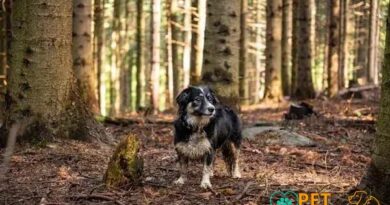What is Quadruped
What is Quadruped?
The term “quadruped” refers to animals that walk on four limbs. This classification includes a wide variety of species, most notably mammals such as dogs, cats, horses, and elephants. Quadrupeds are characterized by their body structure, which is adapted for stability and mobility on four legs, allowing them to navigate diverse terrains effectively. Understanding what a quadruped is can enhance our appreciation of these animals and their unique adaptations.
Quadruped Anatomy
Quadrupeds possess a distinct anatomical structure that supports their four-legged locomotion. Their skeletal system is designed to distribute weight evenly across all four limbs, providing balance and strength. The limbs of quadrupeds typically consist of a combination of long bones, joints, and muscles that work in unison to facilitate movement. This anatomical design not only aids in walking but also in running, jumping, and climbing, making quadrupeds versatile in their environments.
Locomotion in Quadrupeds
Locomotion in quadrupeds is a fascinating subject, as it varies significantly among different species. Most quadrupeds exhibit a range of gaits, including walking, trotting, and galloping. Each gait serves a specific purpose, whether it be conserving energy or maximizing speed. For instance, dogs often switch between a trot and a gallop depending on their activity level and the terrain they are navigating. Understanding these gaits can provide insights into the behavior and physical capabilities of quadrupeds.
Quadrupeds in the Animal Kingdom
Quadrupeds are predominantly found within the mammalian class, but the term can also apply to some reptiles and amphibians. This diverse group includes well-known domesticated animals like dogs and cats, as well as wild species such as lions and bears. Each quadruped species has evolved unique adaptations that suit their ecological niches, from the powerful legs of a cheetah for sprinting to the sturdy limbs of a rhinoceros for stability in rugged terrains.
Behavioral Traits of Quadrupeds
Quadrupeds exhibit a range of behavioral traits that are influenced by their physical structure. Many quadrupeds are social animals, forming packs or herds that enhance their survival through cooperation. For example, dogs, as social quadrupeds, rely on their pack dynamics for hunting and protection. Additionally, quadrupeds often display territorial behaviors, using scent marking and vocalizations to communicate with others of their species.
Quadrupeds and Their Environments
The adaptability of quadrupeds to various environments is remarkable. From the arid deserts inhabited by camels to the dense forests where deer roam, quadrupeds have evolved to thrive in diverse habitats. Their four-legged structure allows them to traverse different terrains, whether it be climbing steep hills or sprinting across open plains. This adaptability is crucial for their survival and reproduction in changing environments.
Domestication of Quadrupeds
Many quadrupeds have been domesticated by humans for companionship, work, and food. Dogs, for instance, have been bred for specific traits that enhance their roles as companions and service animals. The domestication process has led to a variety of breeds, each with unique characteristics and abilities. Understanding the domestication of quadrupeds sheds light on the deep bond between humans and these animals, as well as the responsibilities that come with pet ownership.
Quadrupeds in Culture and Society
Quadrupeds have played significant roles in human culture and society throughout history. They appear in mythology, art, and literature, symbolizing various traits such as loyalty, strength, and freedom. Dogs, in particular, are often referred to as “man’s best friend,” highlighting their importance in human lives. This cultural significance underscores the deep connection humans have with quadrupeds and their impact on our social fabric.
Conservation of Quadrupeds
As habitats change and human activities encroach on wildlife, the conservation of quadrupeds has become increasingly important. Many quadruped species face threats from habitat loss, poaching, and climate change. Conservation efforts aim to protect these animals and their environments, ensuring that future generations can appreciate the diversity and beauty of quadrupeds. Understanding the challenges they face is essential for effective conservation strategies.


